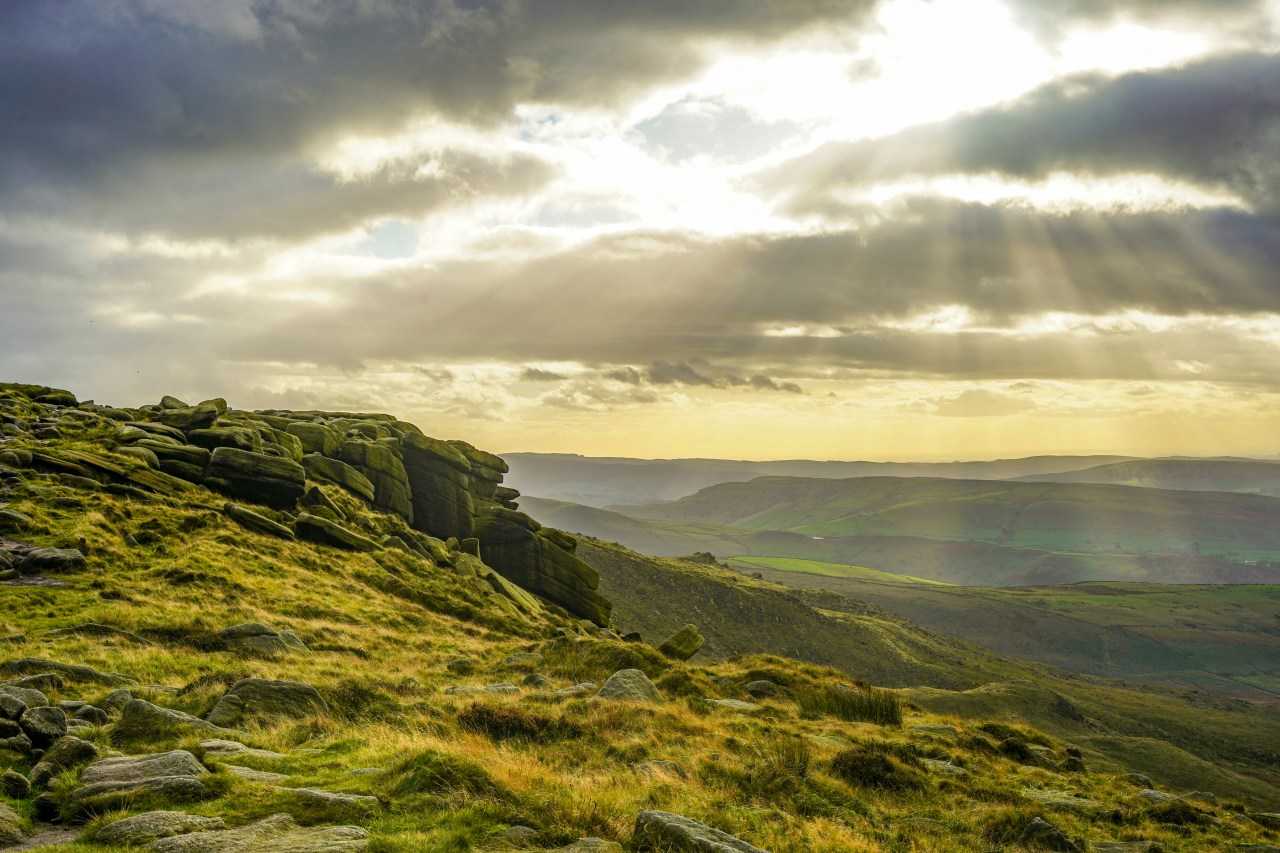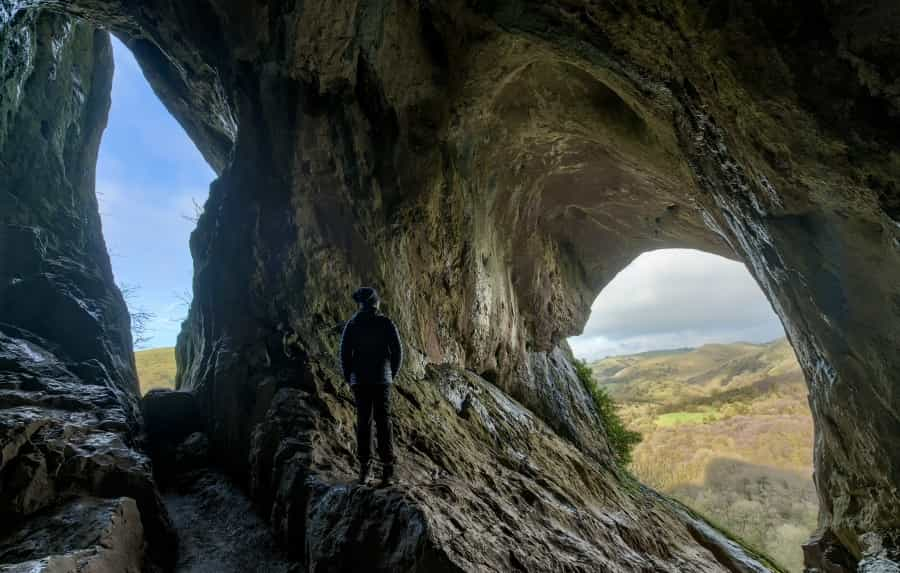Peak District Area Guide

This is where it all began – the Peak District National Park became the first national park in the UK when it was established in 1951. It was a fitting choice, as Kinder Scout (the highest point in the Peak District) was the location of the 1932 Mass Trespass, when hundreds of working-class people gathered to fight for the ‘right to roam’ after some had been denied access to the countryside when they tried to visit.
The park’s inauguration marked a real turning point – overnight, anyone could access 555 square miles (1,438 km²) of some of the country’s most magnificent landscapes. The park’s central location, close to several major towns and cities, was a particularly good choice too, as it meant these open spaces would be within reach for many thousands of workers at the area’s factories and industries.
These days, the park continues to welcome all visitors, who come here to enjoy the scenery, see wildlife and experience all sorts of outdoor activities. Pitchup’s guide to the Peak District will introduce you to this pioneering national park and give you ideas for how to make the most of your visit, whether you’re planning hikes, family days out or adventurous activities like climbing and caving.
Where is the Peak District?
Situated in the northern part of central England, the Peak District National Park is one of the most easily accessible national parks in the UK. It’s estimated that about 20 million people live within an hour’s drive of the Peak District – the park’s stunning landscapes are easy to visit on a day trip or weekend break from Manchester (just to the west of the park), Leeds (to the north) and Sheffield (to the east, along with Nottingham, Derby, Stoke-on-Trent and several other major towns.
There are several A roads running through the park, making getting around by car fairly straightforward. Public transport is an option too, with rail services to useful stops like Bakewell, Buxton, Matlock and Glossop, and a good network of buses running from major settlements to smaller villages and popular attractions.
Are there mountains in the Peak District?
Given its name, you might expect lots of mountains in the Peak District National Park – but in fact, there are only two (the ‘Peak’ name is thought to derive from Pecsaetan, an Anglo-Saxon tribe that once lived here).
The Peak District area is very hilly, but only Kinder Scout, at 636 metres, and Bleaklow (633 metres) meet the official definition of a mountain, which is widely accepted to be peaks of over 600 metres, with an elevation of more than 30 metres over the surrounding land. The two peaks are only about seven miles apart, and as both are crossed by the Pennine Way they can be tackled in one long, challenging day by experienced hikers.
One of the Peak District’s most popular destinations, Mam Tor, is sometimes known as ‘shivering mountain’ because its soil structure leads to frequent landslips. At only 517 metres, it doesn’t qualify as a mountain, but it’s still one of the national park’s most scenic and enjoyable places to walk.
Things to do in the Peak District

The scenic and rugged landscapes of the Peak District make this a wonderful destination for outdoor activities – there are lots of walks and hiking trails, great cycling and mountain biking options and plenty of places for things like fishing, watersports and horse riding. The unusual rock formations have some world-class climbing routes that attract all abilities from beginners to pros, and underneath that hilly terrain also lies a network of caves including the showcaves around Castleton and some intriguing underground tunnels for keen cavers.
Given the lovely scenery, it’s no surprise to find that camping and glamping are popular in the Peak District, giving visitors the chance to admire their surroundings at all times of day and night.
Outdoor activities aren’t the only ways to fill your days around here – the Peak District is also home to a good number of historic and cultural attractions, from elegant Chatsworth to the so-called ‘plague village’ of Eyam, and has plenty of family-friendly days out including biking along the Monsal Trail and meeting animals at the Peak Wildlife Park.
Can you wild camp in the Peak District?
Wild camping is not legally allowed in the Peak District unless you’ve obtained permission from the landowner. The national park authority doesn’t permit camping on the land it owns, and tracing the correct landowner for your chosen spot can be very time consuming – so this means that, in practice, legal wild camping is very difficult here. If you do decide to give it a try, make sure you’re wild camping responsibly, for your own safety and to protect the environment for others, and always have a back-up plan in case you do get asked to move on.
A great alternative to true wild camping in the Peak District is to choose a nearly wild campsite – these simple and cheap campsites have that remote rural atmosphere that most wild campers look for, along with the peace of mind that comes from knowing you’re camping legally and helping to provide a small amount of income for farm owners.

Climbing in the Peak District

The Best Hikes in the Peak District

Caving in the Peak District

Cultural Highlights of the Peak District

Adrenaline Activities in the Peak District

Cycling in the Peak District National Park

The Best Walks in the Peak District

A Guide to Accessibility in The Peak District

Mountain Biking in the Peak District

Wildlife in the Peak District National Park

Family Activities in the Peak District